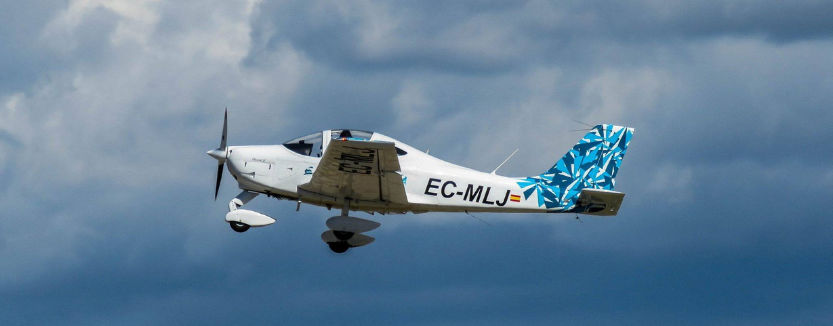Tecnam is an Italian aeronautical manufacturer. The main activity of the company is the manufacture for other aeronautical constructors and the manufacture of its own range of light aircraft.
Tecnam has become one of the leading general and ultralight aviation brands in the world and has more than 4,500 aircraft currently operating.
The company has more than 60 distributors. Tecnam Air Spain is located in Zaragoza. It’s airplanes have become a reference for lovers of aviation, and especially for flight schools.
Many schools incorporate Tecnam aircraft into their fleets, to teach their classes and train their students as pilots. Their aircraft stand out for their ease of use and learning, as well as for their safety.
In EAS Bcn, as a reference aviation school in Spain, also have Tecnam aircraft to train our students. In particular, the aircraft used are TECNAM P2002JF for basic training, and TECNAM P2006T for advanced training and IFR.
TECNAM P2002 JF
The P2002 JF is a two-seater plane side by side, with a low wing and a fixed landing gear. This aircraft is characterized by its great performance and flight qualities. It stands out above all for it’s easy piloting and maintenance, which make this aircraft an excellent solution for the training pilots in flight schools.
It offers the possibility of using AVGAS 100LL or MOGAS fuel, which makes it a more economical and flexible aircraft.
The P2002 JF represents one of TECNAM’s latest aircraft developments as a result of the advanced use of software applications for design, fluid dynamics, and structural analysis. This aircraft has a large presence in many flight schools in Europe, it’s perfect for basic training.
The TECNAM P2002JF airplane is the first aircraft in the world with a manual system for brakes, accelerator and directional control with a VLA type certificate. In addition, in 2014, it was approved by EASA to incorporate a manual control system for disabled pilots.

The architecture of the system aircraft of this version of the Tecnam P2002JF is very flexible and simple. The flight instruction is allowed by adding a third accelerator control and an additional turn indicator on the right side, while whoever sits on the left side can exercise the following actions:
- Check the lever (spoiler and depth) and brakes.
- Control the rudder, accelerator and flap.
In no flight control operation, it will be necessary to separate the hands from the levers, except for the adjustment of radios and altimeter, making this solution safe, as well as ergonomic.
TECNAM P2006T
The Tecnam P2006T aircraft is equipped with Rotax 912S3 engines, designed to incorporate the latest technology from the automotive sector. This engine is certified as FAR33.
Nowadays it’s the only engine approved to use automotive fuel, which gives them a very important competitive advantage over other general aviation engines. Some of the benefits obtained are:
- Reduction of the front
- Better weight / power ratio
- Lower fuel consumption
- Lower propeller RPM
- Lower noise level
This twin-engine formula offers greater safety and reduced operating costs than single-engine airplanes. On the other hand, it also highlights the high wing configuration, which offers stability, excellent visibility and easy access for passengers and luggage.
Tecnam has used its experience in aluminum construction to create a light cell, resulting in an exceptional weight / power ratio.
The wings are of traditional construction, in essence, with a single stringer. For the construction of this aircraft, Tecnam made special emphasis on the structural design of the cabin to meet the accident requirements described in the latest annexes of the FAA-FAR 23 and EASA CS-23 certifications.

The P2006T meets rigid safety requirements thanks to its static tests carried out by a certified laboratory.
Finally, NASA has chosen the Tecnam P2006T as the basis for the construction of the X-57, its first electric plane.
For all these reasons, it’s an ideal aircraft for the realization of advanced training of our pilots and IFR.
